![]()
Thu, Aug 26, 2010 | The Meir Amit Intelligence and Terrorism Information Center
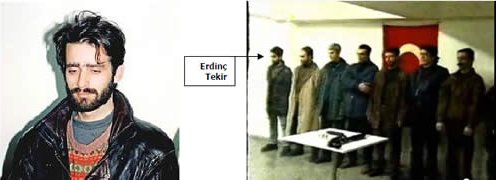
Left: Erdinç Tekir, IHH operative, who participated in the hijacking the Russian ferry Avrasya in 1996 (Photo from the Turkish daily Hürriyet, August 20, 2010); Right: Picture of the terrorists who hijacked the ferry (Photo from YouTube). The leader, Mohammed Tokcan, is standing in front of the Turkish flag (See details below). Erdinç Tekir is at the far left.
Evidence Show That Terrorists Were Involved in the Attack on IDF Soldiers Aboard Mavi Marmara
Erdinç Tekir, IHH operative wounded aboard the Mavi Marmara, participated in the 1996 terrorist attack on the Russian ferry Avrasya to bargain for the release Chechens from Russian prisons. Information indicates a past connection between IHH, and global jihad and Islamist terrorist networks, including Chechen Islamist separatists
Overview
The popular Turkish daily newspaper Hürriyet recently reported that Erdinç Tekir, who was wounded in the fighting aboard the Mavi Marmara, participated in the terrorist attack on the Russian ferry Avrasya in the Black Sea in 1996 to bargain for the release of prisoners. As far as is known, the attack was carried out by an armed group of Abkhazian/Caucasian radical Islamists, which, the Russian media claimed, enjoyed the support of Turkish Islamists. The terrorists’ intention was to conduct negotiations to secure the release of Chechens imprisoned in Russia.
Interviewed by an Islamic website, Erdinç Tekir admitted having participated in the terrorist attack to bargain for the release prisoners as part of his activity to promote the Chechen-Abkhazian cause.
It was the first proof of the presence of a Turk with a terrorist past among the IHH operatives who fought against the IDF on board the Mavi Marmara. Most of the nine operatives killed and the 53 wounded belonged to IHH or radical Islamic Turkish networks linked to it. On the other hand, no human rights activists from the West or Arab-Muslim world were found among the killed and wounded (with the exception of one from Indonesia).[1] Among the wounded were thugs, some of them with martial arts, sports and security guard experience.[2]
We do not have information indicating that the IHH was involved in the hijacking of the Avrasya. However, the armed group that took control of the ferry enjoyed the support of Islamist elements in Turkey (See below). In addition, Erdinç Tekir admitted to an Islamic website that he became closer to IHH during the time he was active in the Abkhazian-Chechen cause.
Reliable information indicates that in the past IHH had relations with global jihad and Islamic terrorist networks in the Middle East, as well as with radical Muslim separatist from Chechnya. Those relations included IHH logistic support for jihadist terrorist cells in Bosnia, Syria, Iraq, Afghanistan and Chechnya, specifically the provision of weapons and funding. A Danish research institute which exposed the past connections IHH had with Al-Qaeda and global jihad networks wrote that the Turkish authorities had seized documents from IHH which showed that detained IHH operatives had been sent to fight in Afghanistan, Bosnia and Chechnya.[3]
The main points of the Hürriyet article
The popular Turkish daily newspaper Hürriyet recently reported that in 1996, Erdinç Tekir, who was wounded in the fighting aboard the Mavi Marmara, participated in the hijacking of the Russian ferry Avrasya in the Black Sea. The attack was meant to take hostages to be used as bargaining chips to secure the release of Chechens imprisoned in Russia (For the full text of the article in Turkish, see Appendix I).
According to the newspaper, a group of nine armed men led by Mohammed Tokcan hijacked the ferry after it set sail from the Turkish port of Trabzon for the Russian port of Sochi. They took 177 passengers and 55 crew members hostage, most of them Russian, and some Turks, and announced that they would release them in return for 250 Chechens imprisoned in Russia. After intensive negotiations, in which the Turkish intelligence service MIT participated, they were convinced to sail the ferry to the port of Istanbul (January 19, 1996).
According to the article, one of the hijackers was Erdinç Tekir, who was wounded during the operation. He was taken to a Turkish security court and sentenced to a sentence of almost nine years in prison. In addition, he apparently served a term of 3 ½ years for other crimes (of whose nature we have no information). In what was apparently a telephone conversation with a Hürriyet correspondent, Tekir said that after being imprisoned for 3 ½ years he volunteered for IHH and participated in the Mavi Marmara flotilla as a first aid worker.[4] He was wounded during the IDF takeover of the ship, held in Israel for 36 hours and returned to Turkey. In response to the request of the Hürriyet correspondent for a face-to-face interview, he answered that in view of the stress of [the Muslim holy month of] Ramadan, he asked the paper to contact him after the holiday.
An ITIC examination showed that Erdinç Tekir was in fact one of the IHH operatives aboard the Mavi Marmara and that he also participated in the 1996 terrorist attack on the Russian ferry. His name appears on the list of wounded issued by IHH and on the list of Mavi Marmara Turkish passengers seized on board. The passenger list identifies him as an IHH activist and first aid worker who boarded the ship in Istanbul. His name is also on the list of Avrasya hijackers appearing in Wikipedia (See the article titled “Black Sea Hostage Crisis”).[5]
Main points of the Dünya Bülteni website interview with Erdinç Tekir (August 21, 2010)
On August 21, 2010, the Islamic Dünya Bülteni website interviewed IHH operative Erdinç Tekir, of Caucasian origin, whose nickname is Hajarat (“firm rock”) (For the full text of the article in Turkish, see Appendix II). The main points were the following:
1. According to Erdinç Tekir, he had been an IHH volunteer for about ten years (i.e., after the attack on the ferry). He said that for the past two years he was an ordinary IHH employee and received a salary.
2. He was introduced to IHH by friends after his release from a Turkish prison. However, he said he became close to the organization during the time he was an Abkhazian-Chechen activist (i.e., when he participated in hijacking the ferry).
3. He admitted participating in the Avrasya hijacking, whose intention was “to make the voice of Chechnya heard by the whole world.” He claimed that the common denominator between him and Israel was that both were pirates. However, he said, the ferry hijackers were “pirates performing a good deed,” while Israel, he said, was “a cruel pirate.”
4. He said he struggled hard to become a Mavi Marmara passenger because he wanted to make a contribution. He claimed that the ship was not carrying terrorists but volunteers and activists. He also made the [false] claim that IDF soldiers boarded the ship from the sea and air shooting live ammunition. He said the activists on board the ship used force to resist without a special system. During the confrontation he was wounded, held in Israel, released and sent back to Turkey with the rest of the wounded.
Russian media coverage of the hijacking of the ferry Avrasya
In November 2009 F. Baderkhan posted an article titled “The exile of North Caucasus abroad and confrontation in Chechnya” on a Russian-language website called “The East and Politics, International Relations in the Asian Countries.” According to the article, Chechens who fled to foreign countries were working to further the Chechen cause. Erdinç Tekir was mentioned as one of the hijackers of the Avrasya. He is described as originally from Abkhazia and as having fought in the war between Abkhazia and Georgia from August 1992 to September 1993. The article claimed that the attackers of the ferry belonged to a pan-Turkish Islamic association called Solidarity with Chechnya and the Caucasian Peoples.
On April 19, 2001, the Russian news agency Tass Itar reported the Russian security service views on the hijacking of the ferry. According to the item, the spokesman for the Russian security service said he had information indicating that the Turkish security service MIT was involved in the affair, and that the hijackers were connected to it. The news agency and the Russian media claimed at the time that the Turkish security service enabled the armed hijackers, led by Mohammed Tokcan, to reach the ferry. Tokcan was an Abkhazian national living in Turkey, served time in a Turkish prison and escaped. According to the Russian media, he spent two years in Chechnya, was pardoned and returned to Turkey in 1999. In 2001 he took hostages in a hotel in Istanbul and demanded Russia stop its attacks on Chechnya.
Appendix I
The article in the Turkish Hürriyet
Gündem
Avrasya’dan Mavi Marmara’ya
Soner GÜREL / ANKARA
Mavi Marmara baskınında yaralanan yardım gönüllüsü Erdinç Tekir’in 1996’da Avrasya Feribotu’nu kaçıran 9 kişilik ekipte yer aldığı ortaya çıktı. Soçi’ye giden feribotu kaçıran eylemciler, yoğun pazarlık sonucu gemiyi İstanbul’a getirip teslim olmuştu.
GAZZE’ye yardım götürürken Akdeniz’de İsrail komandolarının kanlı baskınına sahne olan Mavi Marmara Gemisi’nde, Avrasya Feribotu’nu kaçıran ekipte yer alan ve 8 yıl 10 ay 20 gün hapis cezasına hüküm giyen Hacerat kod adlı Erdinç Tekir’in de olduğu ve yaralandığı belirlendi. Tekir, saldırıdan hemen önce ikiz kızları olduğunu ve gönüllü olarak Mavi Marmara’ya bindiğini söyledi. Tekir, “Daha önceki olay nedeniyle 3,5 yıl 8 ayrı cezaevinde yattım. Son olarak Bolu’nun Seben Kapalı Cezaevi’nden tahliye olduktan sonra yardım gönüllüleri arasına katıldım. Gemiye yönelik saldırı sırasında yaralandım. 36 saat kadar İsrail’de hapishanede kaldıktan sonra Türkiye’ye gönderildim” dedi. Tekir, karşılıklı görüşme istemimizi ise, “Ramazan nedeniyle işlerimiz çok yoğun. Ramazan’dan sonra yine arayın, o zaman değerlendiririz” diyerek, kabul etmedi.
8 yıl 10 ay ceza yedi
Trabzon’dan Rusya’nın Soçi Kentine giden Avrasya Feribotu 16 Ocak 1996 tarihinde Mustafa Tokcan’ın liderliğindeki 9 kişilik silahlı bir grup tarafından kaçırılmıştı. Eylemciler gemi içindeki 177 yolcu ve 55 mürettebatı rehin aldıktan sonra uluslararası kamuoyuna Rusya’nın tutukladığı 250 Çeçen’in serbest bırakılmasını istediklerini duyurmuşlardı. Karadeniz’de yol alan Avrasya Feribotu, MİT ve diğer istihbarat birimlerinin 9 kişilik grupla yaptığı görüşmeler sonrasında 19 Ocak 1996’ta İstanbul’a getirilmişti. Tokcan ve 9 kişilik eylemci grup tutuklanmıştı. Erdinç Tekir, 7 Mart 1997’de İstanbul 3 No’lu Devlet Güvenlik Mahkemesi’nce 8 yıl 10 ay 20 gün ağır hapis cezasına çarptırılmıştı. Tekir, 8 ayrı cezaevinde toplam 3,5 yıl hapis yatmıştı. Son olarak Bolu Seben’deki kapalı cezaevinden tahliye olduktan sonra bir süre Düzce’de kalmıştı.
Appendix II
The interview with the Dünya Bülteni website
İHH’lı Tekir: Biz iyilik korsanıydık
Avrasya feribotunu kaçıranlar arasında bulunan İHH Gönüllüsü Tekin, o günler için “biz iyilik korsanıydık” dedi.
Cumartesi, 21 Ağustos 2010 10:20
14 yıl önce Avrasya feribotunu kaçırdıktan sonra İsrail komandolarının bastığı Mavi Marmara gemisindeki aktivistler arasında yer alan Erdinç Tekir yaşadıklarını anlattı.
İHH’da 10 yıldır gönüllü, 2 yıldır resmi çalıştığı söyleyen Tekir, “İsrail’le tek ortak noktamız, ikimizin de korsan oluşu. Avrasya’nın kaçırıldığı zamanlar bizim ismimiz de ‘korsan’dı ama biz ‘iyilik korsanları’ydık. İsrailliler ise zalim” dedi.
AVRASYA feribotunu 1996’da kaçırdıktan sonra 3 yıl 8 ay hapis cezası alan ve İsrail komandolarının saldırdığı Mavi Marmara gemisinde bulunan Hacerat kod adlı 44 yaşındaki Erdinç Tekir, eski hükümlü kontenjanından İnsani Yardım Vakfı’nda çalışıyor.
Düzce’deki arkadaşları aracılığıyla İHH’yı tanıdığını ve Abhazya, Çeçenistan çalışmaları sırasında vakıfla yakınlaştığını belirten Tekir, Mavi Marmara’ya diğer gönüllüler gibi tamamen insani amaçla bindiğini söyledi. Tekir, “İsrail’le tek ortak noktamız, ikimizin de korsan oluşu. O zamanlar (Avrasya kaçırıldığı zamanlar) bizim ismimiz de ‘korsan’dı ama biz ‘iyilik korsanları’ydık. İsrailliler ise zalim” diye konuştu.
Gemiye binmeden 10 gün önce ikiz çocukları olduğunu söyleyen Tekir, “Eşim de iyilik yapmayı seven ve beni teşvik eden bir insan. İnşallah bir dahaki sefere çocuklarımızla geleceğiz” dedi.
BOMBAYI DENİZE ATTIM
Erdinç Tekir, şunları anlattı: “İHH’da 10 yıldır gönüllü, iki yıldır resmi çalışıyorum. Mavi Marmara’da olmak için çok uğraştım, benim de bir katkım olsun istedim. Gemide bir tane bile terörist yoktu. Hepsi gönüllü aktivistti. Eğer İsrail’in dediği gibi terörist olsaydım, onlardan ele geçirdiğimiz bombayı denize değil üzerlerine atardım. Bütün silahları, teçhizatları elimizdeydi. İsteseydik helikoptere ateş edebilirdik. Bizi durdurmaya çalışırlar, megafonla, telsizle uyarırlar diyorduk ama böyle bir şey olmadı. Aniden hem havadan hem denizden ateş ederek bastırdılar. Arka taraftan, üstlerden gelir diye düşündük. Öyle de oldu. Giremediler. Direndik ama özel bir çalışmamız yoktu.
TEDAVİ ETMEDİLER
Kaldığım süre içinde psikolojik baskı dahil bir çok şey yaşadım. Yaralıydım, tedavi etmeden cezaevine götürüp, revire soktular. Revirde, yaralarımın üzerindeki bandajı çıkarıp attılar, hücreye attılar. Benden daha kötü olanlar vardı. Birbirimize dayanıp destek vererek yürüyorduk. Yatan arkadaşlardan birinin altını ben değiştiriyordum. Üç ay kalırız diye düşünüyorduk. Başbakan’ın ültimatomundan sonra hemen alelacele bir revir hazırlayıp, bütün yaralara pansuman yapıp, ellerimize birer analiz zarfı ve ilaçlar verdiler. Birbirimizle konuşturmadılar.
KOMUTANLAR AĞLIYORDU
Pervomayskaya baskınını yapan Salman Raduyev, geri çekilirken bir köye sıkışmıştı. Köydeki insanlar katlediliyordu. Kafkas kökenliyim. Arkadaşlarla, Çeçenistan’ın sesini dünyaya duyurabilmek için eylem yapmaya karar verdik. Tesadüf Trabzon’daydık. Akşam arkadaşlarla ne yapalım diye konuşurken ertesi gün tasadüf Avrasya gemisi denk geldi. O günkü şartlarda bunu başaracağımızı tahmin etmemiştik ama oldu. Avrasya eyleminden sonra bizi alan SAT komondoları, komutanlar, polisler ağlıyordu. Bizi hem alıyorlardı hem de hüngür hüngür ağlıyorlardı. O günkü şartlarda herkes Çeçenistan’a destek veriyordu, hiçbir sıkıntı yoktu. Hiç pişman olmadım.”
Kaynak: Hürriyet
Notes:
[1] For further information see the July 20, 2010 article, “Most of the activiists involved in the violence on board the Mavi Marmara are radical Islamists and anti-Western.”
[2] For further information see the June 21, 2010 article, “Eight casualties on board the Mavi Marmara were members of Turkish Islamist organizations.”
[3] Information from a study done by the American Evan Kohlman and published by the Danish Institute for International Studies. For the full text of the study see the May 31, 2010 bulletin “A Danish research institute exposes the links the Turkish organization IHH had with Al-Qaeda and global jihad networks.”
[4] Among those wounded aboard the Mavi Marmara were a relatively large number of first aid workers. In our assessment, including them among the operatives was part of a premeditated plan for a violent confrontation with the IDF, in which they expected there would be many wounded.
[5] The Black Sea Hostage Crisis.



 RSS
RSS

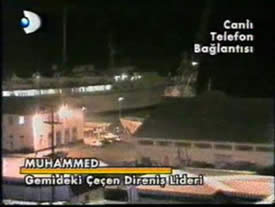

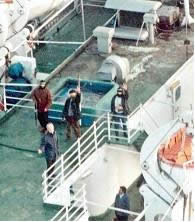
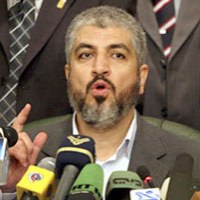

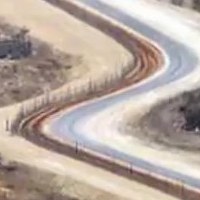
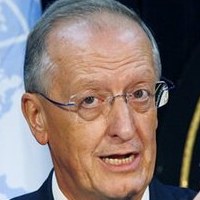
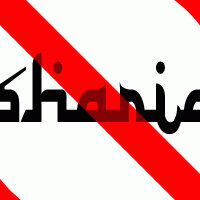




Evidence Show That Terrorists Were Involved in the Attack on IDF Soldiers Aboard Mavi Marmara #israel #gaza #IHH #turkey http://j.mp/ctHasc
RT @CrethiPlethi: Evidence Show That Terrorists Were Involved in the Attack on IDF Soldiers Aboard Mavi Marmara #israel #gaza #IHH #turkey http://j.mp/ctHasc